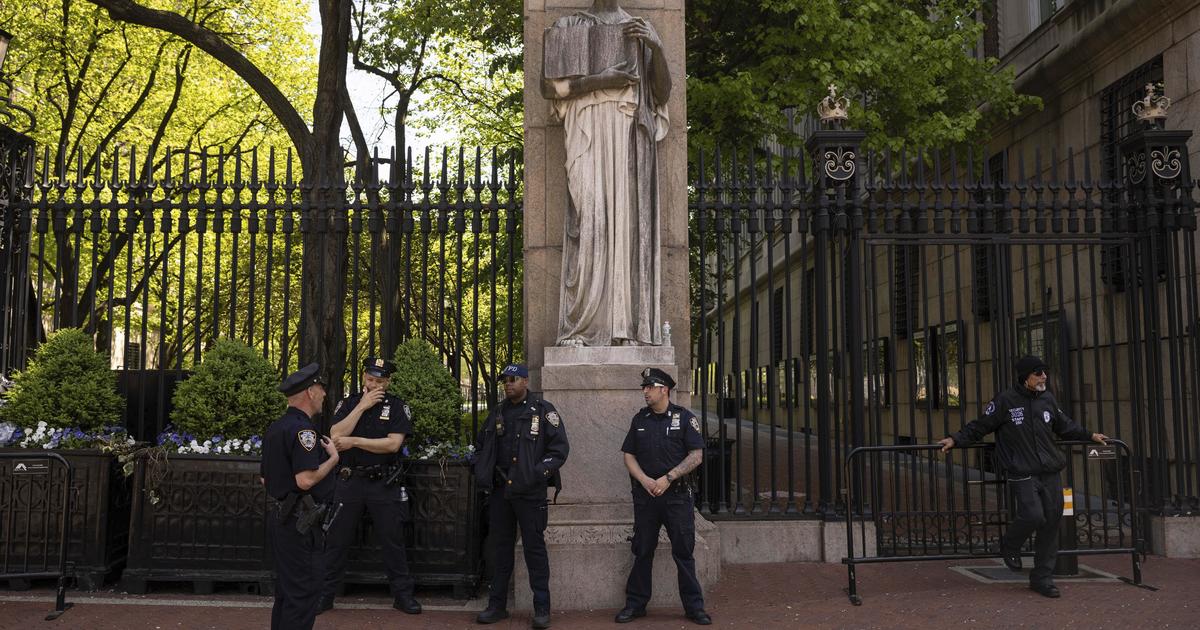Will a warming climate lead to more flash flooding in the Tri-State Area?
NEW YORK -- For the one-year anniversary of Ida, we're reflecting on the flash flooding that stole lives and looking ahead to the future.
Will a warming climate lead to more flash flooding in the Tri-State Area? CBS2's Vanessa Murdock spoke to climate scientists about their projections.
Epic rainfall pummeled the earth on Sept. 1, 2021, at rates that exceeded 3 inches per hour. Storm totals rose above 10 inches in Manville, New Jersey, and over 9 inches on Staten Island.
"The rainfall rates ... that came out of Ida were in the 500- to 1,000-year event," said Dr. Dave Robinson, a New Jersey state climatologist at Rutgers University.
He describes Ida as a transformative storm.
IDA: ONE YEAR LATER: NYC offering protective storm water barriers, but not everyone convinced they'll work
That was certainly the case for Doren Smith, of Elizabeth, New Jersey.
"Turned into the Titanic, you know. There's water coming in everywhere," he said. "I looked outside my apartment. I said, 'Oh my god, we got to go.'"
Smith lived on the ground floor of his building when Ida hit. The Elizabeth River burst at the seams.
"My building was totally underwater, 8 feet of water," he said.
He and his wife hoisted his handicapped father-in-law up to the second floor to safety. Smith says he then headed back downstairs to rescue his neighbor.
"I told him, 'When you open the door, you pull, I push.' He came out floating on a body of water," he said.
For more than four months, his family lived in a hotel with nothing of their own left.
"I never knew that could happen," Smith said.
IDA: ONE YEAR LATER: CBS2 visits district in New Jersey, where some schools haven't been open in 2 years due to pandemic and storm
That's the thing -- flash flooding is happening now in places where it hasn't before.
"We're already seeing more flash flooding, and we're seeing greater impact from flash floods," said Andrew Kruczkiewicz, a senior researcher at Columbia University.
Kruczkiewicz says Cypress Hills, Brooklyn, is among the places that he says did not flood before Ida.
"The projections say that as we move forward in the future, because of climate change, we will see more intense periods of rainfall," he said.
Robinson already sees a repetitive pattern starting with Floyd in 1999 and Irene in 2011.
"Along comes Ida in 2021, and they may seem, oh, five, 10 years apart in some cases, but that's really unusual," he said. "I've never seen a cluster like this."
According to the 2020 New Jersey Scientific Report on Climate Change, annual precipitation will increase 4-11% by 2050.
Robinson, who participated in the research adds, "A flood that occurs every 100 years now, by the middle of this century, might be something that would occur every 20 or 50 years."
IDA: ONE YEAR LATER: Checking back with families whose basement apartments flooded
"It's important to understand your risk, for everybody to think about, 'Am I?' Where I live and where I work and along my commute," Kruczkiewicz said.
Know if the areas you frequent most flood, and know what you need to do if a flash flood emergency is issued.
Kruczkiewicz adds it's not just extreme weather that leads to disaster. When it comes to flash flooding, other factors, such as infrastructure and drainage, play a big part too. Thus, as we plan for a future in a changing climate, a comprehensive approach must be pursued.




